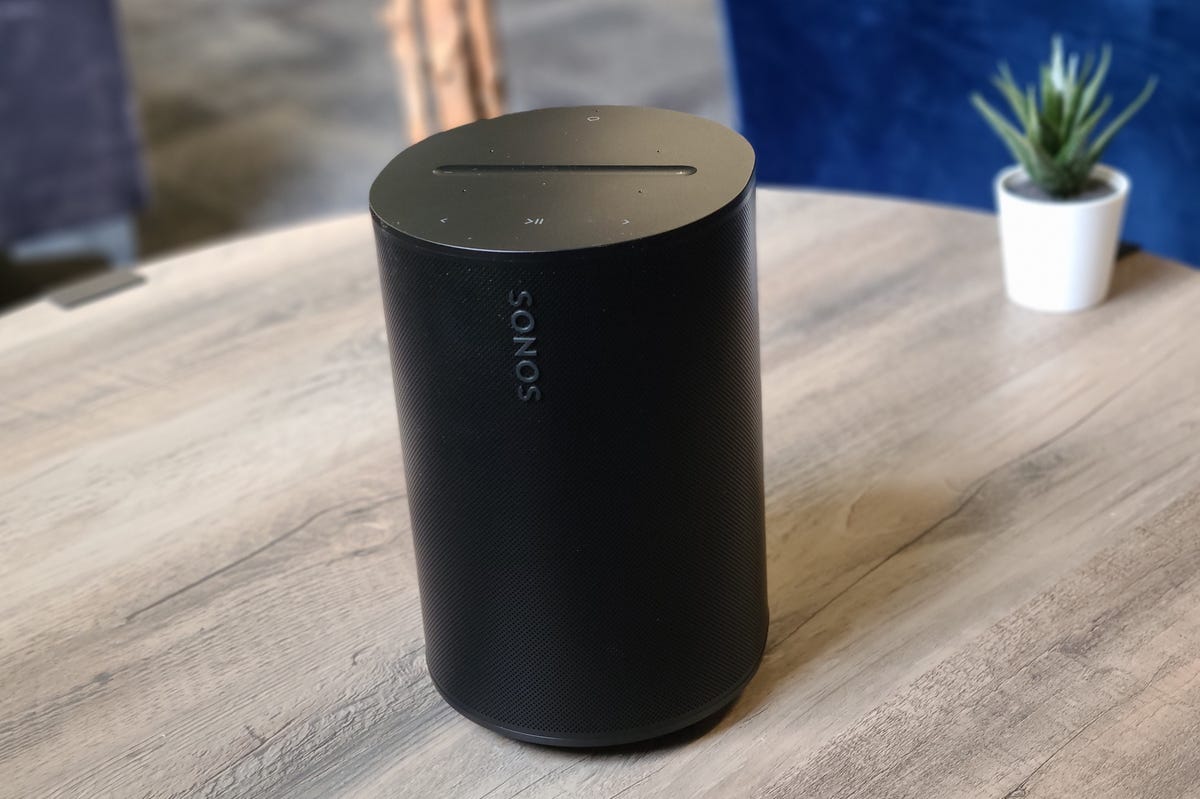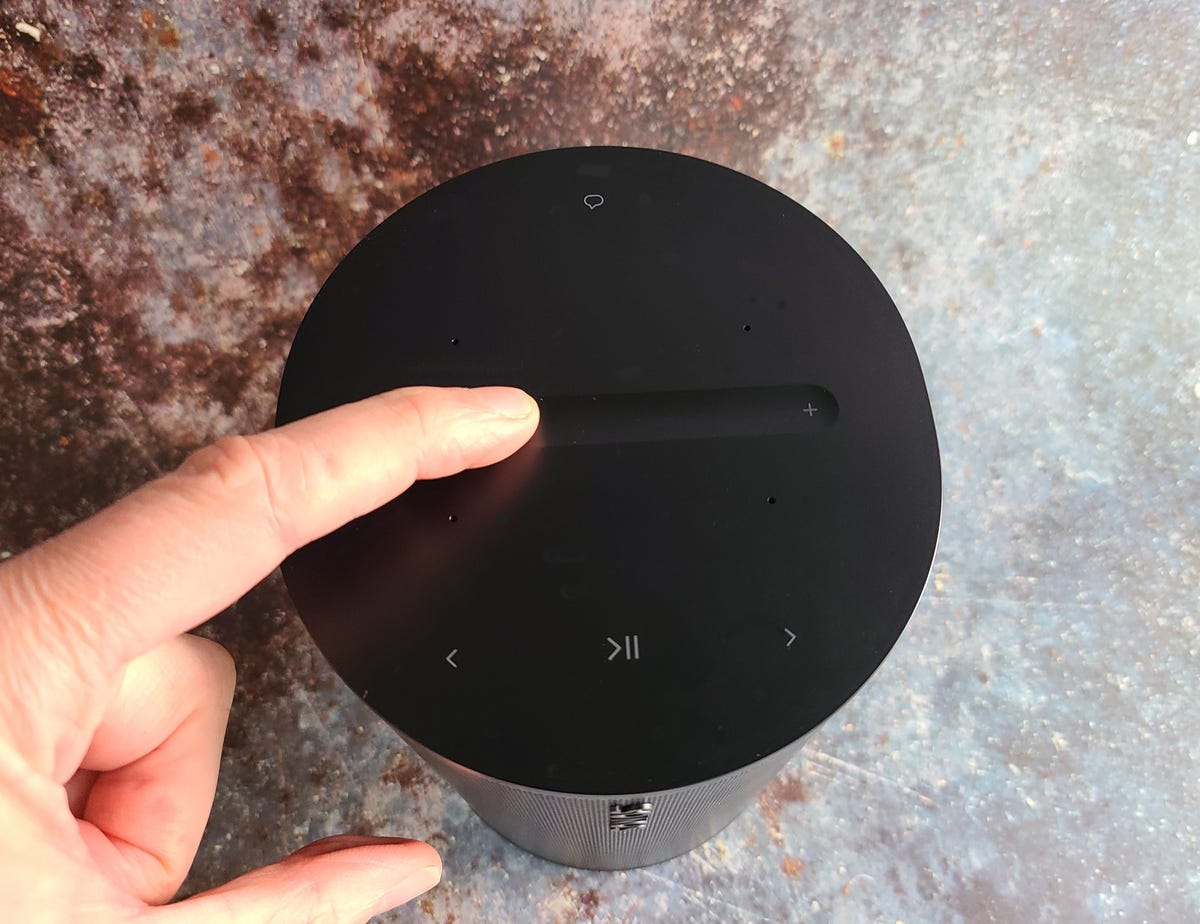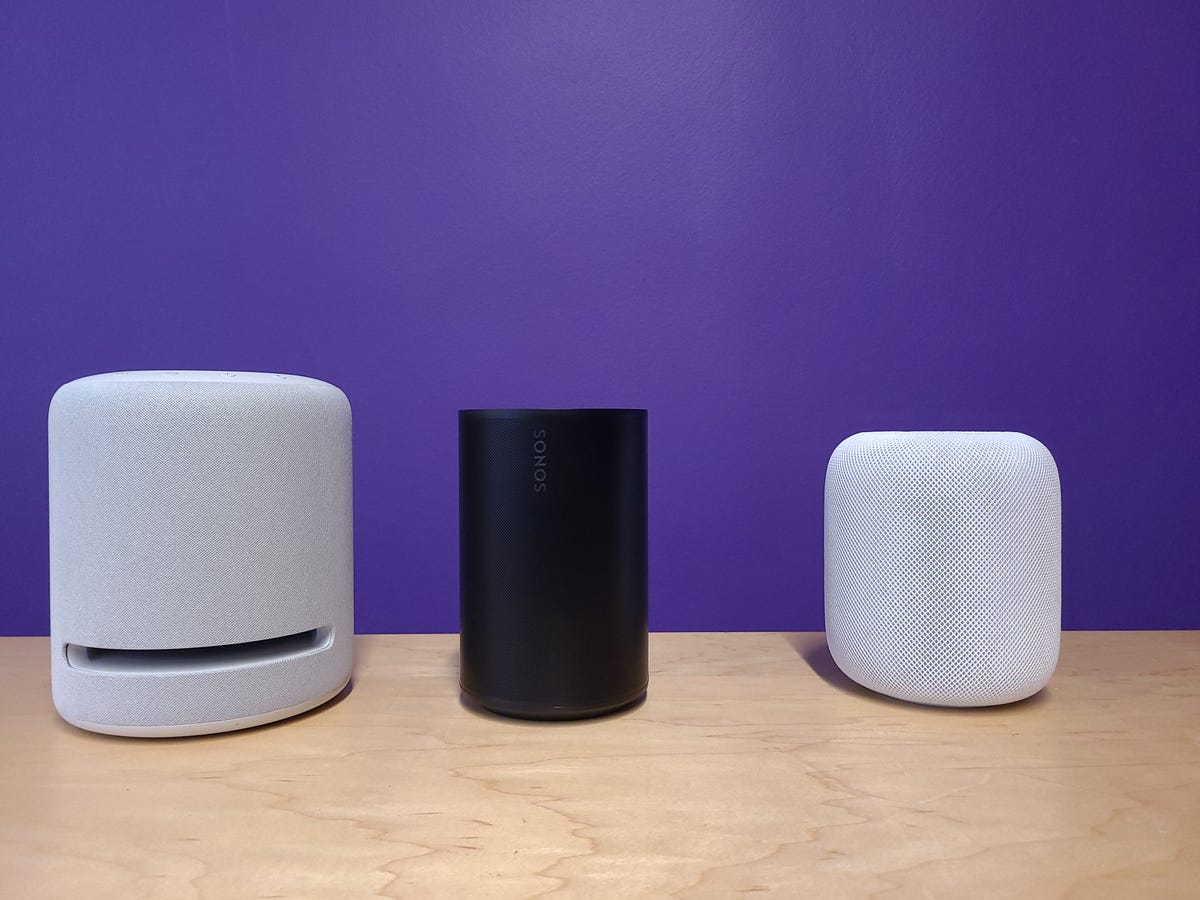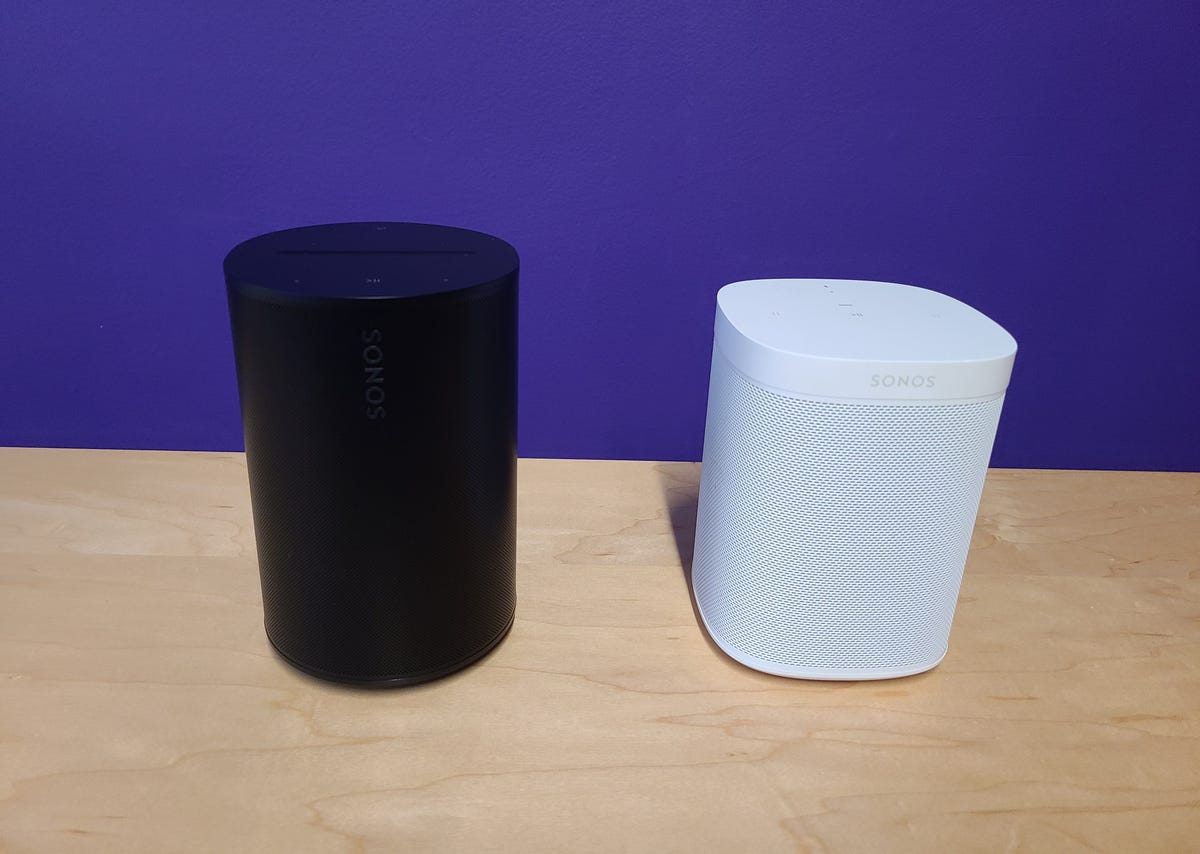
The Sonos One has been my favorite Wi-Fi speaker ever since it was released in 2017. It’s compact and capable of filling large rooms with sound, and it’s reasonably affordable. Yet, with the successive arrival of competitors, the Sonos One has lagged behind in terms of features, especially its lack of Bluetooth.
The $250 Sonos Era 100 tweaks the One formula — it’s still a smart speaker with a choice of two voice assistants (though not Google Assistant) — but it finally adds Bluetooth and stereo sound to the mix. While I’m sad to see the One go, particularly the smart-free One SL, the Era 100 is a worthy successor.
Like
- Excellent sound quality
- Bluetooth adds flexibility
- Robust ecosystem
Don’t Like
- A little more expensive
- Competition offers better features
- Some compression on bass heavy music
- No Google Assistant
Sonos’ “problem” is that its entry-level smart speaker isn’t the only option out there anymore. Other single voice assistant speakers like the $300 Apple HomePod and $200 Amazon Echo Studio offer Dolby Atmos as well as tighter integration with their respective Apple and Echo ecosystems.
The Era 100 offers excellent performance and is noticeably better than the One. It may be a little more expensive, but the extra $30 is easily justified, making the Era 100 the best smart speaker for the money. If you want Google Assistant, though, get yourself a Sonos One while you still can.
What is the Era 100?

Ty Pendlebury/CNET
The Sonos Era 100 is a compact smart speaker with a number of key features, two of which were unavailable on its predecessor, the Sonos One. The first of these, and the biggest turnaround for the company’s home speakers, is Bluetooth. Sonos has always maintained that Wi-Fi is better than Bluetooth — and it is for a bunch of reasons — but its inclusion adds flexibility, especially for apps that don’t have AirPlay or Sonos support.
The second addition is stereo playback (most competitors are mono), done by incorporating two side-firing tweeters. Despite this newfound capability, the Era is more or less the same size as the One at 7.2 by 4.7 by 5.1 inches. Unlike its square-ish predecessor, the Era 100 is shaped like a coffee tin with a wraparound grille. It’s at the top of the speaker where the most obvious changes have occurred, though. The Sonos One featured capacitive touch controls, including the ability to swipe side to side for volume. The Era 100 makes this swipe mechanic more obvious by making a volume “trough,” and swiping left or right adjusts the volume incrementally.

Ty Pendlebury/CNET
Like the One before it, the Era 100 lets you choose a voice assistant — but not as many as before. While previous speakers enabled either Google Assistant or Amazon Alexa, Sonos said that due to a change on Google’s end, the Era 100 can no longer offer Assistant. This is a real shame for people who were hoping to add the speaker to their existing Nest systems, though Sonos says it’s hoping for a solution. Meanwhile, there is the option to add the music-focused Sonos Voice to the Era 100 as well.
Previously, if you owned an iOS device, you could fine-tune your Sonos device for the room it’s in using Trueplay. Android users were left in the cold. Taking a cue from competitors, the Era 100 is now able to self-calibrate using its built-in microphones. It takes only a couple of seconds, but if you want something more complete, you can still use the iOS routine.
Connectivity has been Sonos’ story from day one: Being able to play your music in any room in the house. The Era 100 builds on this with Bluetooth and a USB-C port, which replaces the Ethernet port on the One. You can connect a generic USB-C Ethernet adapter for a wired connection. But the real boon is in Sonos’ optional dongle. The $19 Line-In Adapter allows you to add external devices in a way previously only available on more expensive products like the $449 Port and the Sonos Five. You can then share that source — a turntable or FM tuner, for example — among all of the other speakers in your system. If you want Ethernet, too, you can step up to the $39 Combo Adapter, which adds wired networking to the 3.5mm input.
Meanwhile, the Sonos ecosystem is one of the biggest and most storied multiroom systems out there. It offers the flexibility of an all-in-one control app — for controlling music services and speakers — or you can use streaming protocols like Apple AirPlay 2. The system no longer offers Google Assistant, and there is no Chromecast built-in capability, which limits streaming options for Android users.
Better sound than the One

The Amazon Echo Studio (left), the Sonos Era 100 (center) and the Apple HomePod.
Ty Pendlebury/CNET
If there was ever an old faithful in the world of streaming speakers, it’s the Sonos One. It offers punchy, if slightly veiled, sound that’s good in any environment — from houses and offices to restaurants and shops. Sonos consultant and recording engineer Giles Martin once told CNET you can tell you’re listening to a One because “it’s not annoying.”
When I compared the Sonos Era 100 to the Sonos One, the sound quality improvements revealed themselves over time. The most noticeable thing I found in my testing was that the One was boxier sounding than the Era 100. The Era’s dual tweeters helped the speaker sound more open and engaging. It’s worth noting that for my testing, I turned off the Loudness boost that’s on by default when you set up any Sonos speaker. The result is smoother bass with all materials, and I’ve found it’s always better turned off.
I began my testing with Andrew G’s track Runner, from his God Save the Animals album. The Era rendered this ’90s callback with more dynamism than the One. For instance, the low-end piano plunks that punctuate the beginning of the song actually had some punch that was lacking on the One. The new speaker was a tiny bit louder too, and the decibel meter confirmed about a 3db difference. Not massive, but a decent boost given the meatier low end.

The new Sonos Era 100 versus the old Sonos One.
Ty Pendlebury/CNET
Switching to Life by The Beta Band again amplified the Era 100’s more open sound, though it also revealed the speaker’s only potential Achilles’ heel. The speaker may have big-sounding bass, but it’s still using processing tricks to make this happen. For instance, I could really hear the 100’s volume drop once the deep bassline kicked in at the end of the song. The One made the bass appear softer overall, but the sound didn’t collapse at the end as it did with Era.
Using Yulunga (Spirit Dance) by Dead Can Dance brought out the improvements that the stereo tweeters make. I could hear distinct stereo separation in the left/right shakers that appear after the two-minute mark, and while this was most obvious when I was sitting about a foot away, I could still tell they were separate instruments at six feet away. There is a bass “thrum” at two minutes in that came through deeper on the Era.
Swapping out the One for the Apple HomePod, I instantly found the Era 100 can get louder than the HomePod. Using the same Dead Can Dance track, I found the HomePod had no real stereo effect at any distance. The aforementioned thrum was more confident on the HomePod, though, which is to be expected from a larger, more expensive speaker.
Next up was the Echo Studio, which brought a huge, loud sound from the same Dead Can Dance track. Its sound quality was not as refined as the other two, particularly with the singer’s voice using the speaker’s Stereo Spatial enhancement, and I had to back off the treble and mid a bit as it sounded a little harsh. But if you want a stereo system replacement, this is the closest of all three.
Use your speakers for audiobooks or podcasts? The Era 100 coped well with Andrew Hickey’s deep-voiced narration during his podcast A History of Rock Music in 500 Songs. Intelligibility is excellent, and there was no throatiness or “bad cold” problems.
In the past, I found the Sonos One was able to outperform the Play:3 in a stereo pair. So what about two Era 100s versus a single Era 300? I wasn’t able to hear the Era 100 in a stereo pair, but I hope to test this soon.
Last, I tested the speaker’s Bluetooth. On its own, when playing Alpha Zulu by Phoenix, it’s clear and punchy — there’s very little to complain about sound-quality wise. It was easy to hear the quality difference between Bluetooth and Tidal’s lossless audio, though, even on such a small speaker, which speaks well to the performance of the Era 100. Over Wi-Fi, the bass had more punch and there was much more “air.”
Should you buy it?
When the Sonos One debuted in 2017, there was nothing else like it apart from some tentative smart speakers which quickly disappeared. Certainly nothing as well-formed and enduring as the One. (Yes, technically, Apple’s HomePod was announced before the Sonos, but the Apple speaker went on sale later.) Now, though, the Sonos One has plenty of competition.
If you already own a One, it’s not an essential upgrade. Yet I can see people relegating their existing One speaker to a bedroom in the same way they do with an older TV. If you want a smart speaker that’s compact and sounds great, the Sonos Era 100 is an excellent choice and an easy recommendation. If you want a speaker for background music — while you’re entertaining or just hanging out — the Sonos Era 100 is every bit as capable as its predecessor: It’s just a great smart speaker.
Correction, March 28: An earlier version of this review incorrectly stated the speaker was able to offer Google Assistant, as it is with the Sonos One. This has been corrected and the score adjusted from 8.5 to 8.4.
